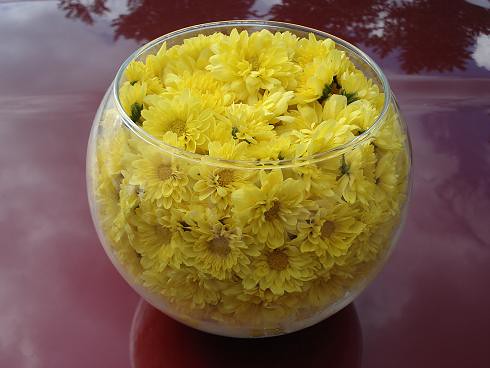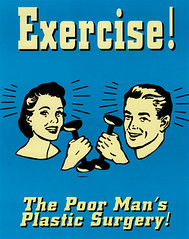What happened to, “Let food be thy medicine and medicine be thy food” ? To be healthy in mind, body and spirit, eating a nutritious diet is an essential piece of the puzzle.
Jo Robinson tells us that the food system has paid more attention to providing popular flavors than to providing wholesome fruits and vegetables.
Consequently, we need to rethink our purchasing habits, if we want to obtain the nutrients with the potential to reduce the risk of four of our modern scourges: cancer, cardiovascular disease, diabetes and dementia.
We pay the doctor to make us better when we should really be paying the farmer to keep us healthy.Rethink health care.
May 25, 2013
Breeding the Nutrition Out of Our Food
WE like the idea that food can be the answer to our ills, that if we eat nutritious foods we won’t need medicine or supplements. We have valued this notion for a long, long time. The Greek physician Hippocrates proclaimed nearly 2,500 years ago: “Let food be thy medicine and medicine be thy food.” Today, medical experts concur
. If we heap our plates with fresh fruits and vegetables, they tell us, we will come closer to optimum health.
This health directive needs to be revised. If we want to get maximum health benefits from fruits and vegetables, we must choose the right varieties. Studies published within the past 15 years show that much of our produce is relatively low in phytonutrients, which are the compounds with the potential to reduce the risk of four of our modern scourges: cancer, cardiovascular disease, diabetes and dementia. The loss of these beneficial nutrients did not begin 50 or 100 years ago, as many assume. Unwittingly,
we have been stripping phytonutrients from our diet since we stopped foraging for wild plants some 10,000 years ago and became farmers.
These insights have been made possible
by new technology that has allowed researchers to compare the phytonutrient content of wild plants with the produce in our supermarkets. The results are startling.
Wild dandelions, once a springtime treat for Native Americans, have seven times more phytonutrients than spinach, which we consider a “superfood.” A purple potato native to Peru has 28 times more cancer-fighting anthocyanins than common russet potatoes. One species of apple has a staggering 100 times more phytonutrients than the Golden Delicious displayed in our supermarkets.
Were the people who foraged for these wild foods healthier than we are today? They did not live nearly as long as we do, but growing evidence suggests that they were much less likely to die from degenerative diseases, even the minority who lived 70 years and more. The primary cause of death for most adults, according to anthropologists, was injury and infections.
Each fruit and vegetable in our stores has a unique history of nutrient loss, I’ve discovered, but there are
two common themes.
Throughout the ages, our farming ancestors
have chosen the least bitter plants to grow in their gardens. It is now known that many of the most beneficial phytonutrients have a bitter, sour or astringent taste.
Second,
early farmers favored plants that were relatively low in fiber and high in sugar, starch and oil. These energy-dense plants were pleasurable to eat and provided the calories needed to fuel a strenuous lifestyle.
The more palatable our fruits and vegetables became, however, the less advantageous they were for our health.
The
sweet corn that we serve at summer dinners illustrates both of these trends. The wild ancestor of our present-day corn is a grassy plant called teosinte. It is hard to see the family resemblance. Teosinte is a bushy plant with short spikes of grain instead of ears, and each spike has only 5 to 12 kernels. The kernels are encased in shells so dense you’d need a hammer to crack them open. Once you extract the kernels, you wonder why you bothered. The dry tidbit of food is a lot of starch and little sugar.
Teosinte has 10 times more protein than the corn we eat today, but it was not soft or sweet enough to tempt our ancestors.
Over several thousand years, teosinte underwent several spontaneous mutations. Nature’s rewriting of the genome freed the kernels of their cases and turned a spike of grain into a cob with kernels of many colors. Our ancestors decided that this transformed corn was tasty enough to plant in their gardens. By the 1400s, corn was central to the diet of people living throughout Mexico and the Americas.
When European colonists first arrived in North America, they came upon what they called
“Indian corn.” John Winthrop Jr., governor of the colony of Connecticut in the mid-1600s, observed that American Indians grew “corne with great variety of colours,” citing “red, yellow, blew, olive colour, and greenish, and some very black and some of intermediate degrees.” A few centuries later, we would learn that black, red and blue corn is rich in anthocyanins.
Anthocyanins have the potential to fight cancer, calm inflammation, lower cholesterol and blood pressure, protect the aging brain, and reduce the risk of obesity, diabetes and cardiovascular disease.
EUROPEAN settlers were content with this colorful corn until the summer of
1779 when they found something more delectable — a yellow variety with sweeter and more tender kernels. This unusual variety came to light that year after George Washington ordered
a scorched-earth campaign against Iroquois tribes. While the militia was destroying the food caches of the Iroquois and burning their crops, soldiers came across a field of extra-sweet yellow corn. According to one account, a lieutenant named Richard Bagnal took home some seeds to share with others. Our old-fashioned sweet corn is a direct descendant of these
spoils of war. (like with tobacco, the Indians get the last laugh)
Up until this time, nature had been the primary change agent in remaking corn. Farmers began to play a more active role in the 19th century. In 1836, Noyes Darling, a onetime mayor of New Haven, and a gentleman
farmer, was the first to use scientific methods to breed a new variety of corn. His goal was to create a sweet, all-white variety that was “fit for boiling” by mid-July.
He succeeded, noting with pride that he had
rid sweet corn of “the disadvantage of being yellow.”
The disadvantage of being yellow, we now know, had been an advantage to human health. Corn with deep yellow kernels, including
the yellow corn available in our grocery stores, has nearly 60 times more beta-carotene than white corn, valuable because it turns to Vitamin A in the body, which helps vision and the immune system.
SUPERSWEET corn, which now outsells all other kinds of corn, was born in a cloud of radiation.
Beginning in the 1920s, geneticists exposed corn seeds to radiation to learn more about the normal arrangement of plant genes. They mutated the seeds by exposing them to X-rays, toxic compounds, cobalt radiation and then, in the 1940s, to blasts of atomic radiation. All the kernels were stored in a seed bank and made available for research.
In 1959, a geneticist named John Laughnan was studying a handful of mutant kernels and popped a few into his mouth. (The corn was no longer radioactive.) He was startled by their intense sweetness. Lab tests showed that they were up to
10 times sweeter than ordinary sweet corn. A blast of radiation had turned the corn into a sugar factory!
Mr. Laughnan was not a plant breeder, but he realized at once that this mutant corn would revolutionize the sweet corn industry. He became an entrepreneur overnight and spent years developing commercial varieties of supersweet corn. His first hybrids began to be sold in 1961. T
his appears to be the first genetically modified food to enter the United States food supply, an event that has received scant attention.
Within one generation, the new extra sugary varieties eclipsed old-fashioned sweet corn in the marketplace. Build a sweeter fruit or vegetable — by any means — and we will come.
Today, most of the fresh corn in our supermarkets is extra-sweet, and all of it can be traced back to the radiation experiments. The kernels are either white, pale yellow, or a combination of the two.
The sweetest varieties approach 40 percent sugar, bringing new meaning to the words “candy corn.”
Only a handful of farmers in the United States specialize in multicolored Indian corn, and it is generally sold for seasonal decorations, not food.
We’ve reduced the nutrients and increased the sugar and starch content of hundreds of other fruits and vegetables. How can we begin to recoup the losses?
Here are some suggestions to get you started. Select corn with deep yellow kernels. To recapture the lost anthocyanins and beta-carotene, cook with
blue, red or purple cornmeal, which is available in some supermarkets and on the Internet. Make a stack of blue cornmeal pancakes for Sunday breakfast and top with maple syrup.
In the lettuce section, look for arugula.
Arugula, also called salad rocket, is very similar to its wild ancestor. Some varieties were domesticated as recently as the 1970s, thousands of years after most fruits and vegetables had come under our sway. The greens are rich in cancer-fighting compounds called glucosinolates and higher in antioxidant activity than many green lettuces.
Scallions, or green onions, are jewels of nutrition hiding in plain sight. They resemble wild onions and are just as good for you. Remarkably, they have more than five times more phytonutrients than many common onions do. The green portions of scallions are more nutritious than the white bulbs, so use the entire plant.
Herbs are wild plants incognito. We’ve long valued them for their intense flavors and aroma, which is why they’ve not been given a flavor makeover. Because we’ve left them well enough alone, their phytonutrient content has remained intact.
Experiment with using large quantities of mild-tasting fresh herbs. Add one cup of mixed chopped Italian parsley and basil to a pound of ground grass-fed beef or poultry to make “herb-burgers.” Herbs bring back missing phytonutrients and a touch of wild flavor as well.
The United States Department of Agriculture exerts far more effort developing disease-resistant fruits and vegetables than creating new varieties to enhance the disease resistance of consumers. In fact, I’ve
interviewed U.S.D.A. plant breeders who have spent a decade or more developing a new variety of pear or carrot without once measuring its nutritional content.
We can’t increase the health benefits of our produce if we don’t know which nutrients it contains. Ultimately, we need more than an admonition to eat a greater quantity of fruits and vegetables:
we need more fruits and vegetables that have the nutrients we require for optimum health.
By JO ROBINSON
Jo Robinson is the author of the forthcoming book:
“Eating on the Wild Side: The Missing Link to Optimum Health.”





